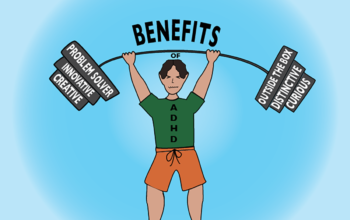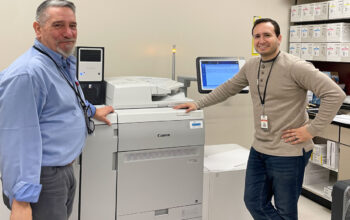Charlie Sosnick
Director of Special Projects
For more information, see this photo essay on occupational therapy: In Pictures: Occupational Therapy.

In a sun-filled classroom by the gym, an oval table marks the beginning of a student’s journey through the NCHS Special Education program. It is here that a student and his or her parents meet with teachers, special education faculty, guidance counselors and other staff to develop the student’s Individualized Education Plan (IEP) and long-term academic, emotional and social goals.
Special education is an oft-misunderstood service represents a significant portion of the school. Close to 10% of the student population has an IEP. 20 certified staff members and about 15 non-certified staff members work within special ed.
Grade 6-12 Coordinator of Special Education Carole Pakkala leads these students and staff at the high school. “We don’t call Special Ed a program or a place, but we call it a service,” she said.
The range of services offered for students with IEPs is expansive. “The certified staff have state certification in their areas of expertise: special education, speech and language, occupational therapy, physical therapy, social work, and assistive technology,” Ms. Pakkala said.
Individualization within Special Ed
Special Education teacher Joe Ditolla has worked at NCHS for 36 years. As a provider of special ed services, he focuses on each student’s personal needs. “The goals set are individualized,” he said. “The law states that every student in special education has to have an IEP. In that plan are the student goals which we monitor and then revise annually.”
Some of Mr. Ditolla’s students require only limited services. “I have a couple of learning centers where I have kids that are totally mainstream but they need the support and the self management,” he said.
However, in some cases a student’s needs are not even visible. “It could be for a severe hearing disability,” Mr. Ditolla said. “We have a couple of students like that who are totally mainstream and we have those type of supports and hearing specialists that work with them.”
Occupational Therapist Marianne Gorski works with students to help them learn how to do meaningful activities. She encounters many different kinds of students with unique occupational therapy needs. “There is a very wide range from people who need a little bit of assistance and require special education to needing a very large, in depth, individual education plan because their difficulties are great,” she said.
As an occupational therapist, Ms. Gorski has one of the most unique jobs within special education. She has worked with students aged 3 to 21 and helps with activities ranging from handwriting and typing to cooking and laundry. “We work on meaningful activities, so any activity that you do that’s meaningful is an occupation,” she said. “Being a child, being a brother, it’s not just what you’re getting paid for. Cooking for yourself, dressing yourself, those are all occupations.”
Ms. Gorski’s classroom is unlike any other in the school. With access to a full kitchen, swing, laundry machines, and a plethora of dexterity and coordination training tools, Ms. Gorski is equipped to handle a variety of occupational therapy needs. “We’re very fortunate being here in New Canaan because we have a lot of supplies and materials that help out our students so they can learn and understand how to do activities,” she said. “If you’re just giving fake money and not using real money it has a different quality. If you’re pretending to wash dishes, it’s not the same as turning on the faucet, using the water, and testing the temperature.”
Growth outside of the classroom
A large portion of special education resources are dedicated to the social and emotional needs of students. Social Skills Facilitator Kristan Mountain began working at NCHS in 2002 on a grant from the federal government to work on social skills for students with autism. She has more than 25 students in her caseload.
Ms. Mountain helps students with autism overcome difficulties with communicating and relating to others. “Typically kids with autism have difficulty understanding social cues,” she said. “They take everything very literally, they don’t know how to self monitor, they will interrupt, want to dominate the conversation. They will maybe be obsessive about one topic and not interested in anyones else’s topic.”
Ms. Mountain often takes students into the town of New Canaan to work on essential life skills. “Today I am going out with a student to buy Christmas presents,” she said. “They may not even know how to ask where the greeting cards are. We work on helping them make decisions, helping them stay focused and stay on task, helping them understand the various steps.”
School Social Worker Eileen Donellan also assists students with the non-academic parts of special ed students’ educations. “In terms of school social workers and school psychologists, their piece in it is looking at the emotional piece,” she said. “Is there some depression or anxiety or some emotional stuff that’s interfering with a child being able to fully participate?”
To serve her students, Ms. Donellan helps guide them toward their social goals. “When somebody wants to manage their weight or increase their skill in a sport, they have coaching along the way,” she said. “That’s similar to what special education is. It’s a way of coaching students along and teaching them skills to improve in certain areas.”

Ms. Pakkala actively works to have students who receive special education as involved in the school community as possible. Athletics is a popular extracurricular choice. “We will also have kids who will participate as a manager or just to help on the team. That gives them the opportunity to participate in a team type of activity,” Ms. Pakkala said.
Many students enjoy participating in drama. Ms. Pakkala has seen students with significant disabilities, including autism, find success in plays. “Our theater has been extremely open to having students be part of the play,” she said. “Practices can be really long, so schedules are developed so that they are there for specific times and we will have people there to support them.”
Non-academic activities are an important and often forgotten part of special education services. “High school is time of exploration and kids with IEPs need that same thing. Just going home and waiting for the next day isn’t enough,” Ms. Pakkala said.
The Launch program
The special education program’s efforts to serve its students do not end at graduation. According to Ms. Mountain, the Launch program serves students who have completed high school but can remain in the system until 21. Participants do paid jobs or internships and continue to work on the skills they developed in high school. Some further their educations at Norwalk Community College or UConn Stamford.
Ms. Mountain works in the Launch program to make students more capable in their post-school life. “They learn life skills like banking, how to order from a menu, how to advocate for yourself, conflict resolution, and relationship development,” she said. “Kids with autism don’t know how to relate to people that way. They are socially awkward and want to be alone.”
The Launch program’s location in town center is ideal for its focus on teaching life and community-based skills. “We are trying to educate the students about the community and educate the community about the students,” Ms. Mountain said. “Our overall goal for any student is to be independent and navigate the community with confidence and success.”
The Launch program relies on school system resources and the participation of local businesses in order to operate. According to Ms. Gorski, the Launch building is like an apartment with a kitchenette and space for communal lunches. “We have students that work at the Library, at the New Canaan Diner, Joe’s Pizza, Walter Stewarts’, the YMCA, the Nature Center, Waveny Care Center, and a couple of others,” Ms. Gorski said.
Though the Launch program has had great success, its services allude to the unfortunate realities of life after high school for people with disabilities. “People with disabilities overall are underemployed and yet they could certainly be advantageous,” Ms. Pakkala said. “There is still the stigma of people not sure of what to say or do. It’s gotten better over the years, but when you’re out in the community with kids with more significant or more overt disabilities, people still kind of look at you.”
Attitudes and Perceptions
The way in which special education is viewed at the high school is a subject for discussion. Ms. Mountain comes across misconceptions in her daily work. “I think that some students don’t realize the potential that a lot of students have,” she said. “They have strengths and weaknesses just like everybody else and they should not be lumped in a general category where people make stereotypical remarks or assumptions about their cognition or about their social behavior.”
However, Mr. Ditolla is impressed with the acceptance students with IEPs receive. “I think this population is to be commended because they do a wonderful job of accepting these students with differences,” he said.
Ms. Gorski feels that the school system gives her the resources to best serve her students. “Here in New Canaan, I feel like I am actually able to treat and help and serve my students and families as I would like to and I am very grateful for that,” she said.
For more information on occupational therapy, see this photo essay with pictures by Grace Gowdy and Abby Geanakos: In Pictures: Occupational Therapy



